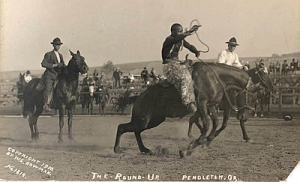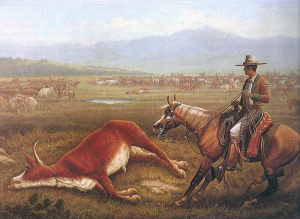1.3 Examining Diversity
Sociologists typically are concerned with the full range of human experiences. Diversity refers to the presence of differences including psychological, physical, and social differences that occur among individuals. As we develop our sociological perspectives, we see that human differences exist within systems of privilege and oppression, where some people in certain social positions are included and gain rewards from the system and others in different positions are excluded. Privilege refers to something of value one group has that another group does not, simply by belonging to a group, either as an unearned advantage or an unearned entitlement. Oppression refers to a combination of prejudice and institutional power that creates a system that regularly and severely discriminates against some groups and benefits other groups. Let’s return to the example we started with at the beginning of this chapter, the Pendleton Round-Up. As you read the next section “Representations of Diversity at Round-Up,” reflect on your experiences with rodeos.
1.3.1 Activity: Representations of Diversity at Round-Up
Sociologists look for patterns to identify who participates in events and what images become dominant. If we examine the history of rodeos, we see that contemporary events routinely incorporated into Wild West shows, such as roping, controlling, and riding wild bulls and horses were shaped by Hispano-Mexican techniques of breeding and area games (Fredriksson 1993). What about representation? Who do you visualize when you think of cowboys? Men? Do some racial categories come to mind more than others? The folklore surrounding the version of the Wild West seen through stories and films undercuts the roles of vaqueros who served as a great influence for what became the American cowboy. On occasions when vaqueros are included, they are portrayed as lazy and untrustworthy (Gandy 2008).


In addition to understanding how groups are portrayed, sociologists are also interested in examining who is not represented. The contributions of black cowboys are routinely omitted from the myth of the Wild West as well. During the Civil War, as white ranchers went to fight in the war, black cowboys arrived to take their place. Gandy (2008) suggests that about one in every four cowboys was African American. White and black cowboys worked together sharing living quarters and food, black cowboys still experienced social discrimination which limited employment opportunities and inclusion in some public spaces. Legalized racial segregation in the form of Jim Crow laws in North America led to discrimination against racial and ethnic minorities in society (Patton and Shedlock 2011).
An examination of historical documents and life histories, reveals that the American cowboy is much more diverse than depictions of Western movie depictions played by John Wayne; yet, in our Wild West imagery the presence of Latinx vaqueros and black cowboys are virtually nonexistent. Some scholars who study rodeo suggest that representations of events are bound in whiteness, while others examine the ways in which racial minorities and women help shape rodeos. As rodeo participants, women, Indigenous people, and small-town amateurs embrace rodeo as a sport and shape it in their own image (Mellis 2003).
Gender ideologies connected with the myth of the Wild West, also created limited representational roles for cowgirls to participate in publicly (Patton and Schedlock 2012). The gendered nature of the organization of the sport inherently prevents women’s participation in professional events, rather than formal rules (Forsyth and Thompson 2007). However, there are roles and spaces that are driven by women’s participation, though some of these roles are nearly rendered invisible. In addition to women’s highly visible roles serving as Rodeo Queen and princesses, or competing in the American Indian Beauty Contest or Junior Indian Beauty Contest at Round-Up, women provide emotional labor for men who are participating in professional events. Acting as a support system or a “helpmate,” women are regularly involved in the activities associated with Round-Up. Even though their participation may not be directly visible, the roles taken by secretaries, event organizers, wives, fans, and groupies offer the emotional support and financial contributions necessary for rodeos to occur (Forsyth and Thompson 2007).
1.3.2 Licenses and Attributions for Examining Diversity
“Examining Diversity” by Jennifer Puentes is licensed under CC BY 4.0.
Privilege definition from the Open Education Sociology Dictionary is licensed under CC BY-SA 4.0.
Oppression definition from Smithsonian National Museum of African American History & Culture is used under Fair Use.
Pedagogical Element: Representations of Diversity at Round-Up by Jennifer Puentes is licensed under CC BY 4.0.
Images
Figure 1.4 Photo. (c) Oregon Encyclopedia – George Fletcher 1910. Used under fair use.
Figure 1.5 Picture. (c) Time Life Books – The Old West – “The Cowboys”. Used under fair use.
